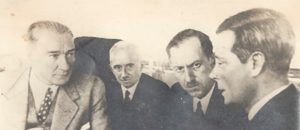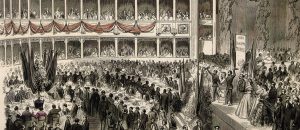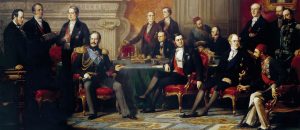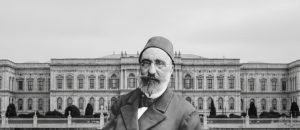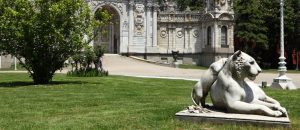Mustafa Kemal Atatürk spending the most severe period of his illness and his last days in Dolmabahçe Palace in Istanbul, instead of the Çankaya Presidential Mansion in Ankara, is a conscious decision carrying deep strategic and symbolic meanings, going beyond a simple coincidence or spatial preference. This choice contains powerful messages such as solidifying the bridge between the old and the new even as he died, demonstrating to the entire world how the Republic embraced the six-century legacy of the empire, and sealing the permanence of the revolutions with his last breath. Atatürk’s selection of Dolmabahçe as his final resting place is not merely a death, but the official taking over of an era. [Link: Atatürk and the Republic’s Legacy -> /learn/ataturks-legacy-in-the-palace]
A Symbolic Meaning Beyond Medical Justifications
When Atatürk’s illness worsened in the summer of 1938, his arrival in Istanbul and settling in Dolmabahçe Palace after staying for a while on the Savarona Yacht certainly had medical justifications. The best professional doctors of the era were in Istanbul, and it was thought that the sea air would benefit him. However, the symbolic meaning carried by the founder of the Republic of Turkey bidding farewell to life in a palace that was the most magnificent symbol of the old regime is much deeper than these practical reasons.
Message 1: “Continuity of the State is Essential”
By spending his last days in Dolmabahçe, Atatürk delivered the message that the new Republic he founded was the continuation and the sole legitimate heir of the 600-year Ottoman state tradition. The passing of the new state’s founder in the most important venue of an empire [which legally ended with the abolition of the Sultanate -> /son-ferman-saltanatin-kaldirilmasi-ve-dolmabahce-sarayinin-imparatorluk-defterinin-kapanisi] symbolized not a break, but a “transfer of power”. This was a strong message directed both internally and externally:
To the Internal Public: It showed that the Republic was not a rootless regime, but rather that it embraced the thousand-year state memory of these lands.
To the Outside World: It proved to foreign states that power in Turkey was not vacant, that the state’s highest level representative office (the palace) was fully controlled by the new regime, and that the state tradition continued uninterruptedly.
Message 2: “The Revolutions Are Permanent and Irreversible”
Atatürk facing death in a location that was the symbol of the Sultanate was also the strongest proclamation of the irreversibility of the revolutions. This action virtually declared: “The regime that once owned this palace has now passed into history, and even in its most magnificent venue, the founder of the Republic now rests. This palace belongs no longer to a Sultan, but to the nation and its leader”. This was the final and sharpest answer given to circles who might be loyal to the monarchy and those dreaming of its return. He was sealing the “re-signification” process, which he initiated [by turning the Sultan’s room into a working office -> /padisahin-odasi-milletin-lideri-ataturk-dolmabahceyi-nasil-cumhuriyetin-kalbi-yapti], at the highest level with his own death.
Message 3: “Istanbul and Ankara Are A Whole”
Ankara was the capital of the Republic, and the heart of the state beat there. However, Istanbul was still the former capital of the empire, the cultural and economic center. Atatürk spending his last days in Istanbul conveyed the message that new Turkey was a whole, embracing both Ankara’s vision of modernization and Istanbul’s historical and cultural depth, putting aside the historical rivalry between the two cities. The founder of the state was “at home” in both important centers of the country. This was an important symbolic stance that underscored national unity and integrity.
Facing History and Overcoming It
In conclusion, Atatürk’s decision to spend his last days in Dolmabahçe Palace is a strategic action taken with a deep historical consciousness. This is not just dying in a place, but transforming a place and all the history it represents with his last breath. By dying in the Sultanate’s palace, he symbolically defeated the Sultanate for the second and final time. This choice is the most poignant and powerful lesson demonstrating how Atatürk fearlessly faced history, embraced it instead of rejecting it, and overcame it to build a new future. The [Link: Room number 71 -> /71-numarali-oda-bir-sarayin-bir-lider-icin-nasil-mutevazi-bir-eve-donustugunun-hikayesi] in Dolmabahçe is therefore not just a place of death, but a monument of victory where an era was officially and symbolically taken over.








